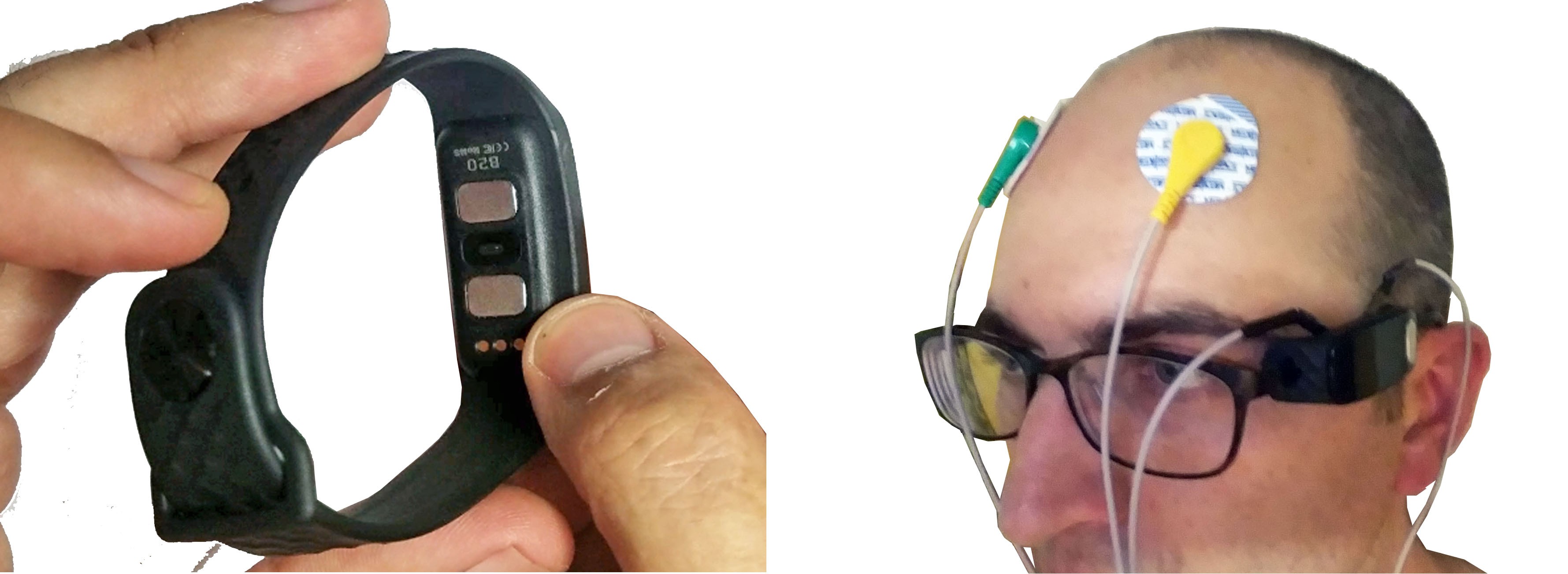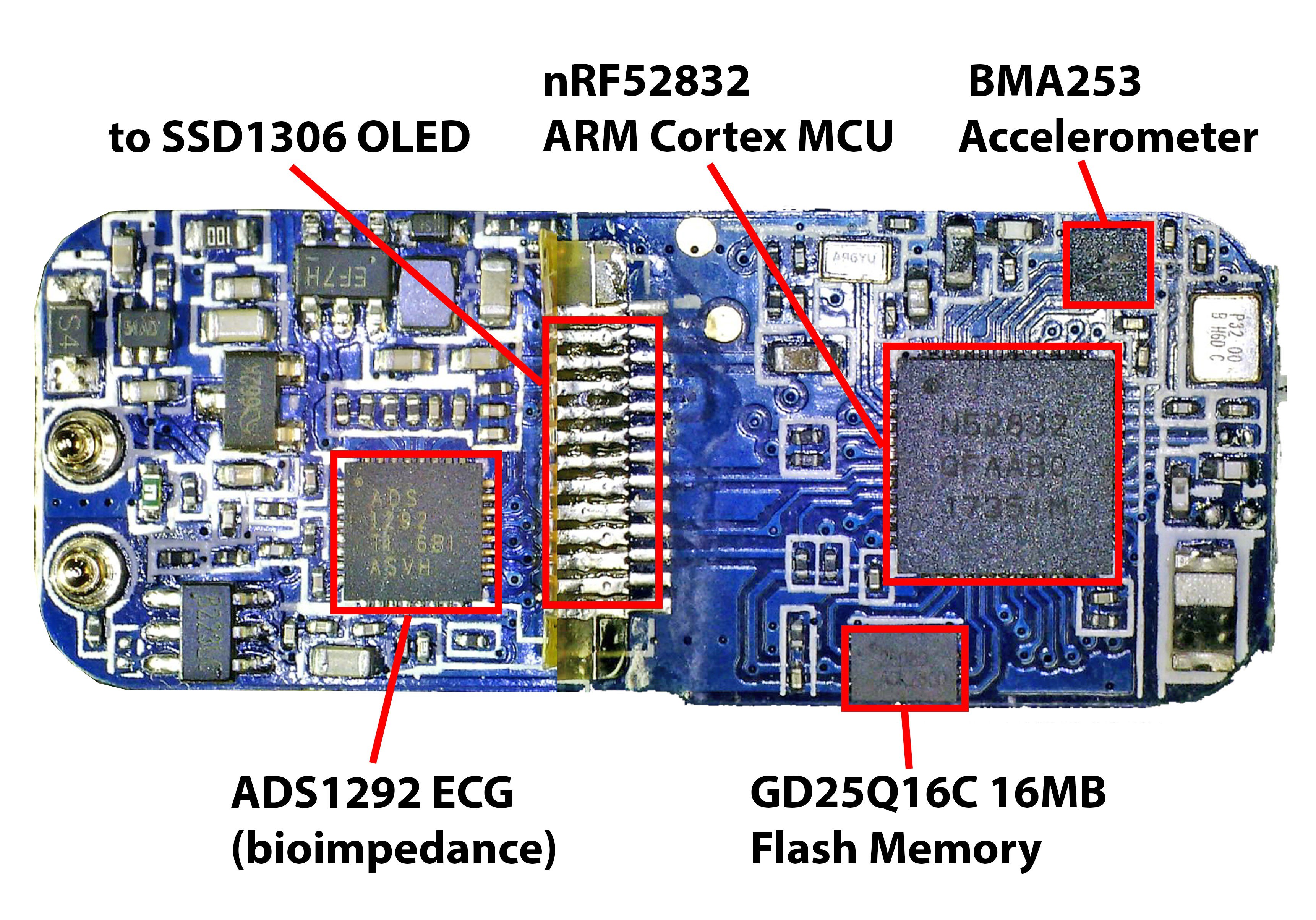
Their are a number of nRF52832 activity trackers which contain the Texas Instruments ADS1292 ECG front-end IC, for example the B20 (links 1 2 3 4 5 6 7 ), the CK12 (links 1 2 3 4 5 ), the G20 (links 1 2 3 4 5 ), and the B9 (links 1 2 3 4 5 ). Although the ADS1292 is marketed for ECG, it is part of a family of chips focused on an array of bioimpedence applications and there is no particular reason it can't be used for simple experimental EEG and EMG projects.
I have provided an in depth tutorial on hacking the B20 activity tracker and applying FIR (Frequency Impulse Response) and FFT (Fast Fourier Transform) analysis to the devices ADS1292 data in this project: https://hackaday.io/project/160618-hacking-a-35-ecg-nrf52-fitness-tracker-into-eeg.

I have added an Arduino Core variant file to the project GitHub repository for the B20 as well as code examples for EEG with FIR filters, EEG with FFT and ECG with Protocentral's Processing application.
B20 ECG Fitness Tracker Specs:
- Texas Instruments ADS1292 two channel (only one is used) ECG front end
- Nordic nRF52832 ARM Cortex M4 SoC/MCU
- Bosch BMA253 Accelerometer
- Gigadevice GD25Q16C 16MB Flash Memory IC
- PPG Heart Rate Sensor
- 0.95" 64*128 pixel monochrome SD1306 OLED display
- Vibration motor
- 80mAh LiPo battery and battery charger
B20 nRF52832 MCU Pinout
- P19: Button
- P3: Vibration Motor
- P5: SSD1306 OLED Display
- P6: SSD1306 OLED Display
- P7: SSD1306 OLED Display
- P11: GD25Q16C 16MB Gigadevice Flash Memory
- P12: GD25Q16C 16MB Gigadevice Flash Memory
- P13: GD25Q16C 16MB Gigadevice Flash Memory
- P14: GD25Q16C 16MB Gigadevice Flash Memory
- P15: ADS1292 CS
- P16: ADS1292 DIN
- P17: ADS1292 SCK
- P20: ADS1292 START
- P22: ADS1292 RESET
- P23: ADS1292 DOUT
- P25: HR I2C SDA
- P26: HR I2C SCL
- P28: BMA253 Accelerometer CS
- P29: BMA253 Accelerometer SDI
- P30: BMA253 Accelerometer SDO
- P31: BMA253 Accelerometer SCL
 Curt White
Curt White
Discussions
Become a Hackaday.io Member
Create an account to leave a comment. Already have an account? Log In.